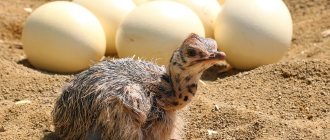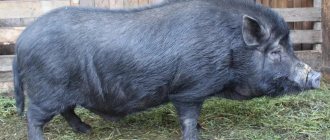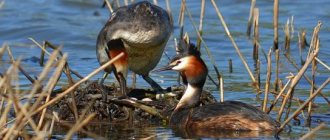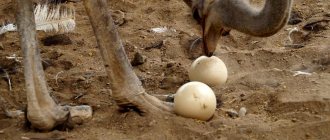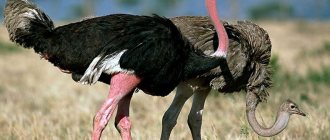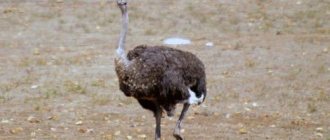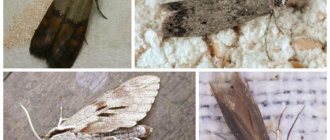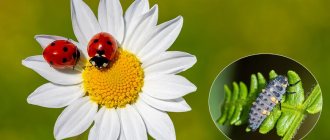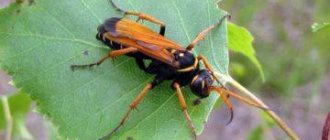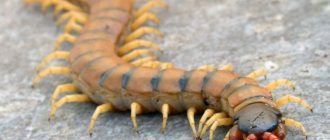The vast majority of people know what an ostrich is, and they will definitely mention that it is the largest bird in the world. Some will add that ostriches bury their heads in the sand. Someone will remember that they cannot fly. But the life of these large flightless birds is not limited to well-known facts and myths. It is much more interesting and includes many unexpected aspects.
The vast majority of people know what an ostrich is, and they will definitely mention that it is the largest bird in the world
American, Australian or African?
Until recently, rhea, emu, and the common ostrich were included in this systematic genus. According to the latest classification of birds, this is the name of the only species. The South American rhea and Australian emu are now separated into separate genera of rhea and cassowary. The habitat of representatives of the species Struthio camelus (common, or African ostrich) is the savannas of Africa, located north and south of the equatorial forest belt.
The largest bird in the world has an extraordinary appearance: only the body is feathered, and the long strong legs and slender neck with a small head are covered with sparse downy hairs or are completely bare. The height of the ostrich is up to 2.7 m from the ground to the top of the head, but the weight rarely exceeds 70 kg, although individuals have been known to reach a weight of 100 kg.
The largest bird in the world has an extraordinary appearance
In these birds, sexual dimorphism is expressed in color. Males have a chic black outfit with white wing tips and the same tail, consisting of the same feathers that medieval gentlemen wore as plumes on their hats, and their ladies - in the form of graceful fans. Females have a protective coloration: their plumage is brown, repeating the shades of burnt grass.
Ostriches have wings, but cannot fly. In the process of evolution, they mastered another method of movement on flat and open terrain: fast running. The maximum speed that birds can reach reaches 70 km/h, but usually the bird runs much slower or walks if nothing threatens it.
Ostriches have wings but cannot fly
Thanks to this method of movement, the ostrich's paw underwent interesting changes during the formation of the species. Most bird species have 4 toes on their feet. Adapting to fast running, ostriches have lost 2 fingers - they are completely reduced and invisible in appearance. Of the remaining ones, one has a large, hard claw, the other has no horny growth, and the finger itself looks underdeveloped.
Kinds
The modern classification identifies three subspecies of Australian inhabitants:
- Woodward, living in the north of the mainland. Color pale gray;
- Rothschild, living in the southwestern region of Australia. Color dark brown;
- new Dutch ostriches living in the south-eastern part. The plumage is gray-black.
The ongoing confusion between emus and African ostriches continues due to superficial similarities. There are fundamental differences between them:
- in the length of the neck - the ostrich is half a meter longer;
- in the anatomical structure of the paws - emus with three fingers, ostriches with two;
- in the appearance of the eggs - in emu they are smaller and deep blue in color.
African ostrich and emu are different birds in Australia.
Family life
In the vast expanses of the African plains and woodlands, you can see family groups of ostriches. They usually consist of a male, who stands out clearly with his exquisite outfit, and 3-5 females, who are almost invisible against the background of the landscape. But there is a strict hierarchy in the group.
The polygamous male is the real leader in the group. He guards and protects his harem, while highlighting the only female ostrich as the dominant female. It is with her that he forms a pair for the nesting season, and only covers the rest. The “beloved wife” behaves accordingly: when she finishes laying eggs, she expels the remaining females, regardless of whether they lay more. The alpha places his eggs in the center of the nest, where optimal conditions for incubation and hatching will be provided. The remaining eggs laid at this point are laid out around the edges.
Since in areas where ostrich hunting is still permitted, there is a shortage of mature males, up to 50 eggs can accumulate in a nest, which simply do not fit under the bird incubating them. Therefore, those lying on the edges usually remain unbrooded, and the chicks do not hatch from them. The comfortable conditions provided by the dominant female for her eggs allow mainly her chicks to be born.
An ostrich nest is a small hole in the ground, dug by a caring father of a family and his wife. Incubation is carried out by all females in turn, changing from time to time during the day. Their protective coloration contributes to this. At night, the male sits on the nest, and the harem rests nearby. Sometimes birds leave the nest unattended and feed nearby.
Nutrition
The diet of Australian emus is based on plant foods, like that of the related cassowaries. Partially present animal component. Birds feed mainly in the morning. Their attention is attracted by young shoots, plant roots, grass, and cereal crops. Bird raids on grain crops cause damage to farmers, who not only drive away the feathered robbers, but also shoot the uninvited guests.
Emu ostriches travel long distances in search of food. They feast on plant buds, seeds, fruits, and are very fond of juicy fruits. Birds need water and must drink at least once a day. If they are near a pond, they go to water several times a day.
Australian emus do not have teeth, like African ostriches, so to improve digestion, birds swallow small pebbles, sand, even pieces of glass, so that with their help the swallowed food is crushed. In specialized nurseries, the necessary component for high-quality digestion is also added to the birds’ food.
Food in captivity in summer consists of a mixture of grain and grass, and in winter - hay with mineral supplements. Emus love sprouted grains, green oats, cranberries, and alfalfa. Birds willingly eat grain bread, carrots, peas, shells, cake, beets, potatoes, and onions.
Under natural conditions, Australian ostriches sometimes hunt small animals; in nurseries they are mixed with bone meal, meat, and chicken eggs to compensate for the lack of food of animal origin.
The amount of food per day is approximately 1.5 kg. You should not overfeed the feathered giants. Water must be constantly available, although birds can go without it for a long time. The feeding of the chicks is different. The main food for young animals are insects, various rodents, lizards, and worms.
Until the age of eight months, growing emus require protein food. An excellent appetite helps you gain weight quickly. If after birth the babies weigh only 500 g, then by the first year of life they are difficult to distinguish from adults.
Gallery: African ostrich (25 photos)
Choosing a breed for home breeding
In order for ostrich breeding to be financially beneficial, it is necessary to clearly define what goals will be pursued. This could be getting eggs, ostrich meat, or both. The following recommendations will help you choose birds:
- If the purpose of breeding is meat, breeding emus is the optimal choice. These birds have dietary meat, which is especially valued by consumers.
- Rheas are well suited for obtaining ostrich eggs. They are lightweight and unpretentious, which reduces the cost of their maintenance.
- The undisputed leader is the African ostrich. The breed is universal. From these birds you can get fat, skin, feathers, meat and eggs.
Breeding ostriches as a business
Ostriches and humanity
Because of their beautiful feathers, ostriches were almost exterminated by the middle of the 19th century. But the first experiments in breeding them on farms turned out to be extremely successful. Since hunting meant spending much more time searching for and shooting rare birds, ostrich farms received an extraordinary impetus for development.
Initially, they were located in warm regions with conditions close to natural for these birds. Subsequently, people noticed that the birds tolerate more severe conditions well. Farms began to appear in European countries; currently they exist in Sweden and in central Russia.
Ostriches are bred for their tasty beef-like meat, feathers, and eggs, from whose durable shells various souvenirs can be made. But the most valuable and in demand at the moment is leather. It is considered one of the most expensive types of leather and is valued on a par with crocodile or snake leather.
The phenomenon of riding ostriches is also common. Horse racing is held in the USA, Australia and South Africa, but European legislation prohibits this sport. During racing, special harness and saddles are used, and the bird is controlled in much the same way as a horse. In countries where resort tourism is developed, riding ostriches is allowed only for entertainment purposes.
Rhea-shaped
There are 2 known types of rhea:
- ordinary - this subspecies is inferior in size to all representatives of the ostrich family (140 cm, 25 kg), the neck and head are feathered;
- long-billed (Darwinian) - this species is smaller than the common rhea (90 cm, 15-25 kg).
Their homeland is South America. The wings are large, with 1 claw. The rhea has powerful legs, but not as many fingers as the ostrich - there are 3 of them, not 2.
Features of the paddock area
The area for bird walking should be a place with dry soil and grass, without wetlands. Not far from the paddock, a forest belt is welcome - for protection from strong winds.
The entire farm area should be fenced with a large two-meter fence, since males are very active during the mating season.
- The pen is built long - about 40-50 meters: This gives the birds greater freedom.
- For a comfortable existence, one ostrich should have about 10 square meters. m.
- For a large family of 8-10 individuals, the enclosure should be 1 hectare.
The pen itself is often covered with wire, and feeders and special drinking bowls for birds are hung. The pen area must be well cleaned: the bird can easily swallow any remaining wire or glass, which can lead to irreversible consequences.
Productive characteristics
In the wild, it is typical for most ostriches to begin laying eggs when they reach the age of 4 years. But when kept on a farm, this period is halved.
The benefits of ostrich farming can be seen using the following example:
- birds have good egg production - up to 80–100 eggs per production season;
- average egg weight up to 2 kg;
- incubation period 42–45 days;
- females are highly productive up to 35 years of age;
- males are 5 years older;
- The fertilization percentage of egg production is 90%.
Raising young animals
The age of 4-5 years in males is considered the beginning of sexual maturity. Females develop faster; for them this period begins at 2-3 years.
- The period when females begin to lay eggs lasts about 8 months - from approximately March to November.
- In a year, in a family with 4 mature females, about 150 ostrich chicks can appear.
Raising young animals is the most important period. Their health depends on the temperature, dampness in the room, feeding, and also on the lack or excess of light.
With proper care, the survival rate of chicks is 8 out of 10. Separate pens for young animals up to one year old are built, the same length as for adults, so that the ostrich chicks can run.
It is important to know
Despite the fact that ostriches treat people well, during the breeding season the males show hostility that is unusual for them in normal times. During this period, farm staff must clearly understand and follow safety measures. To calm the males, special hooks are used, with the help of which the birds are knocked to the ground in order to disorientate them. If this does not help, then you can close the head of the breeder using a fabric bag in which a special slot is left for the beak.
What you need to know about feeding young animals?
After the ostrich chicks are born, experts do not advise giving them food. To saturate them with high-calorie substances, they use the yolk sac, the supply of which is enough for 3 days. From the fourth day you can give finely chopped greens mixed with feed intended for chickens.
fermers.ru
